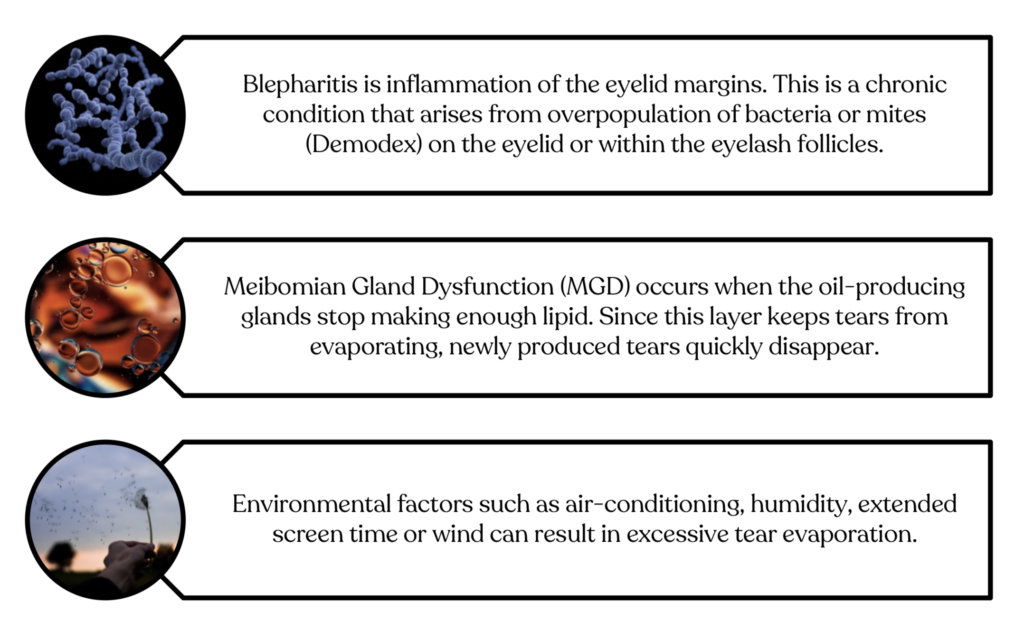Do you suffer from any of the following symptoms?
- Itchy eyes
- Sore eyes
- Gritty eyes
- Red eyes
- Watery eyes
- Sore eyes when using a computer for extended periods
- Stinging, scratchy or burning eyes
- Blurred vision or intermittent blurred vision
- Feeling that something is in your eyes
- Sensitivity to light
- Difficulty wearing contact lenses
- Struggling with night driving
If so, you may be suffering with Dry Eye Disease.
Dry eye disease describes a range of conditions that feature ineffective lubrication of the eye. Symptoms range from discomfort through to disabling pain, redness and fluctuating vision and can impact on many visual activities. The underlying causes of dry eyes are complex and numerous and need a thorough Smart Vision dry eye assessment for your Smart Vision Optometrist to determine the cause and most appropriate treatment. At our Bondi and Mosman practices our Smart Vision Optometrists are equipped with Smart Vision advanced technology to appropriately diagnose and treat dry eye disease.
Book for Dry Eye Assessment
Book your Dry Eye Assessment today with a qualified Smart Vision Optometrist.
What causes dry eye disease?
The tear film is made up of three elements: the mucin (mucous) layer, the watery aqueous layer and the oily lipid layer. Specialised cells (such as goblet cells) embedded throughout the surface of the eye create the mucin component. The lacrimal gland under the bony aspect of the eyebrow secretes the watery aqueous component. The meibomian glands in the upper and lower eyelids secrete oil to make up the lipid component.
In most dry eye cases, the watery aqueous component is produced at normal quantities but evaporates too quickly. This is called evaporative dry eye. There are three main causes: blepharitis, meibomian gland dysfunction and environmental factors. Both blepharitis and meibomian gland dysfunction increase with age and separately with hormonal changes.

Severe cases of dry eye are due to low production of aqueous tears, referred to as aqueous deficient dry eye. This is less common than evaporative dry eye, and may be due to autoimmune disease, dehydration, poor sleep, medication or prior eye surgery.
References: Clayton JA. Dry Eye. N Engl J Med. 2018 Jun 7;378(23):2212-2223. doi: 10.1056/NEJMra1407936.
Book for Dry Eye Assessment
Book your Dry Eye Assessment today with a qualified Smart Vision Optometrist.
